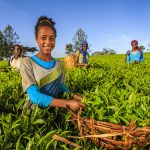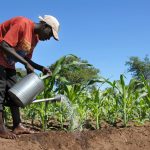Our project studies the role of the public sector and the opportunities it can provide for women’s employment and the gender pay gap in low-income countries (LICs). Using the preliminary evidence from microdata for a number of SSA countries, we show that the public sector in poor economies behaves very differently from private firms: it…
Women’s Employment and Family Decisions in Sub-Saharan Africa
Relaxing Seasonal Constraints to Improve Labour Productivity
Despite increased investment and international competition in agriculture, small-scale farming continues to be the most common economic activity in many developing countries. In Zambia, 60% of the population lives in rural areas, where 78% of the population were employed in agriculture in 2012 (Zambia Labor Force Survey, 2012). Rainfall patterns in Zambia allow for only…
Labor Markets in Southern Africa: Evidence and Policy Lessons
Food Constraints and “Ganyu” Labour
Small-scale farming continues to be the principal source of employment and income for a majority of the population in low-income countries. Zambia is no exception: in 2008, 80% of employment was in agriculture. Even though Zambia has recently been re-classified as lower middle-income country primarily due to its large copper and cobalt exports, most Zambian…
Modelling Labour Markets in LICs with Imperfect Data
Despite the centrality of the labour market to the questions of poverty and inequality, African labour markets are not well understood and significant research gaps exist. These gaps have important implications: they weaken the ability of governments to design and implement effective policies and hamper the monitoring of change and the measurement of impact. Within…




